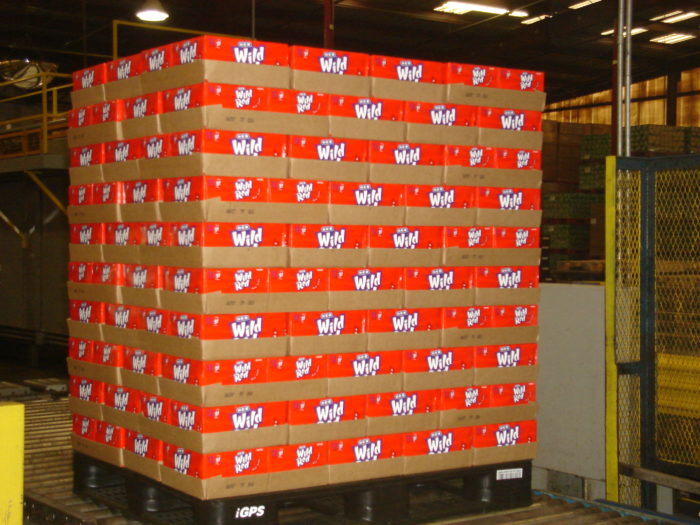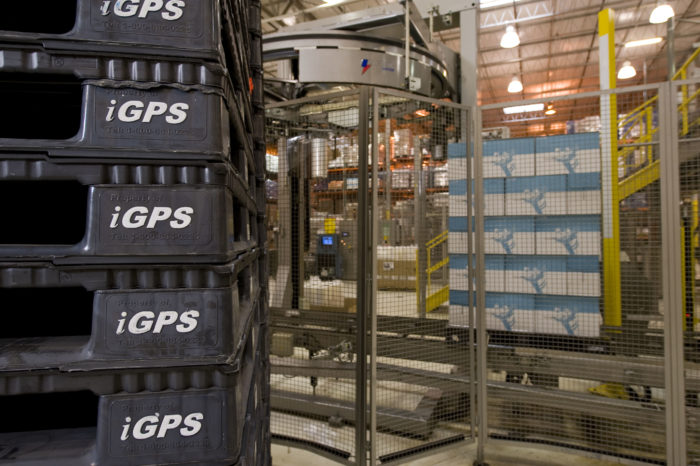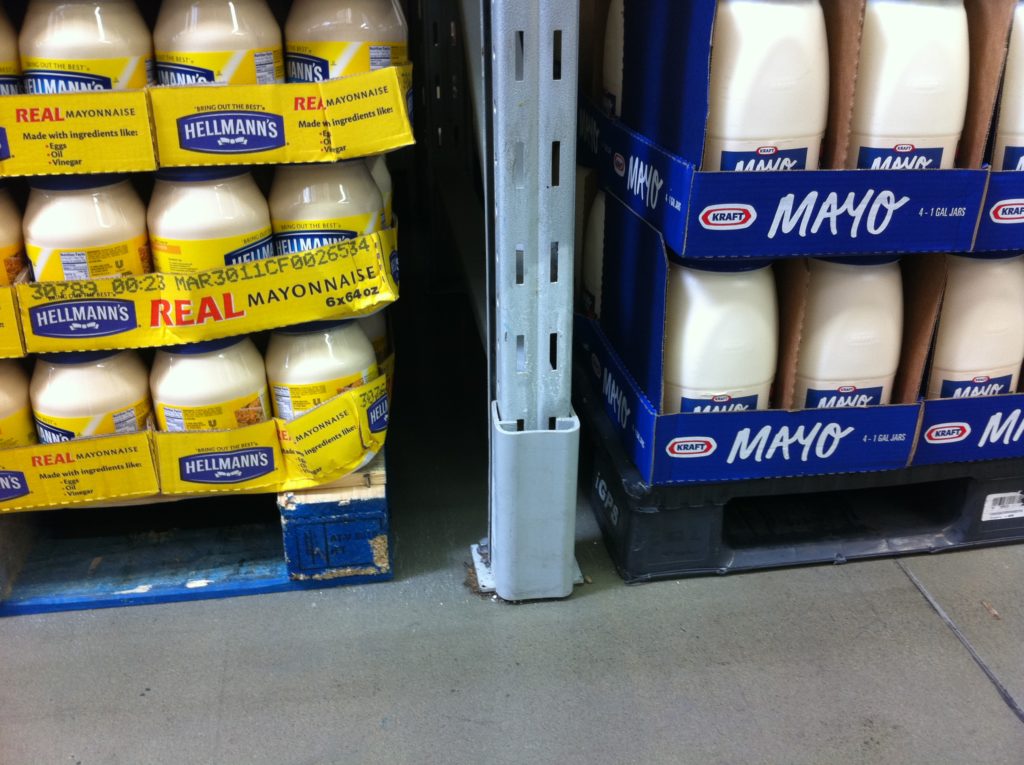If you’ve worked in the supply chain for any length of time, you’ve seen how product overhang on the edges of pallets can result in products and packaging being crushed or damaged. When the goal is to get as many products on a pallet as possible, it’s easy to create loads that aren’t an optimal fit for the pallet. Pallet overhang is one of the most common examples of this. Retailers who see overhang on pallets may reject loads, which is a big expense for supply chain managers who must repack trucks and sometimes even throw out loads of perishable products.
Product overhang can be a result of incorrect pallet size, bad stacking practices, or pallet damage. This issue is especially common in wood pallets, as leading edge boards erode over time and may even break off completely. Not only does this lead to load instability, but it can also cause product contamination when splinters and other debris from the damaged pallet work their way into packages. However, there are some tactics supply chain managers can use to reduce product overhang and protect load integrity.
Tips for Avoiding Overhang on Pallets
 The most obvious way to prevent overhang from causing product damage in the supply chain is to train employees in proper palletization methods and ensure they are familiar with the basic practices involved in creating a stable, uniform load. In addition to proper pallet loading procedure, a few other tools can also help keep products from shifting and being damaged during transport.
The most obvious way to prevent overhang from causing product damage in the supply chain is to train employees in proper palletization methods and ensure they are familiar with the basic practices involved in creating a stable, uniform load. In addition to proper pallet loading procedure, a few other tools can also help keep products from shifting and being damaged during transport.
- Pallet Straps: Adjustable pallet straps are great tools for locking in columns of products and holding them together on the pallet. Securing products to the pallet using straps prevents product movement, which reduces overhang risk.
- Stretch wrapping: Stretch or pallet wrapping can greatly enhance the stability of a load and can pull in wider products that may hang over the edge. Pallet wrap typically isn’t designed to replace straps, but to work in conjunction with them.
- Corner boards: Pallet edge or corner boards can be the final step in cubing off a pallet load and enhancing its stability. It’s also a good way to gauge minimal overhang that may not be obvious at first.
- Plastic pallets: Switching to plastic pallets from wood platforms eliminates one of the most common causes of overhang: the breakdown of wood pallets. Strong plastic pallets are not subject to the same type of wear and tear as wood, meaning that pallet edges won’t break off during transportation or handling and expose products to damage. As a natural material, wood also tends to warp, shrink, and otherwise change shape over time. As a result, it’s possible to use the same stacking protocols to load the same products onto wood pallets of the same size and still accidentally cause product overhang on some pallets. Plastic, on the other hand, will not warp or shrink and will maintain the same dimensions over its lifespan.
Plastic pallets are among the best options for cutting back on overhang and increasing load stability.
While good stacking procedures will eliminate much of the risk of overhang on pallets, the tools listed above enhance product security even further. Plastic pallets are among the best options for cutting back on overhang and increasing load stability, though many supply chain managers worry about the expense of switching out their entire fleet. If this is a concern, renting plastic pallets through a pallet pooling service can help supply chain managers make the change easily and cost-effectively.
Making the Transition to Plastic Pallets Easier with Pooling
 Overhang on pallets is an expensive problem. When products hang off the edge of pallets, they are not only vulnerable to damage during handling, but they can actually cause pallets to break down faster. Overhang also causes issues with automated equipment, as product overhang affects a pallet’s dimensions, which may throw off a precisely calibrated automated system. Finally, retailers may reject loads with overhang, which can result in major losses for a company when wasted products, man-hours, and additional trips are taken into consideration. Eliminating pallet overhang saves companies money, and, as a result, can lower the total cost of business (TCOB). Plastic pallet rental fits seamlessly into these cost-saving measures, as pooled plastic pallets reduce overhang and do away with the cost of purchasing and maintaining a pallet fleet.
Overhang on pallets is an expensive problem. When products hang off the edge of pallets, they are not only vulnerable to damage during handling, but they can actually cause pallets to break down faster. Overhang also causes issues with automated equipment, as product overhang affects a pallet’s dimensions, which may throw off a precisely calibrated automated system. Finally, retailers may reject loads with overhang, which can result in major losses for a company when wasted products, man-hours, and additional trips are taken into consideration. Eliminating pallet overhang saves companies money, and, as a result, can lower the total cost of business (TCOB). Plastic pallet rental fits seamlessly into these cost-saving measures, as pooled plastic pallets reduce overhang and do away with the cost of purchasing and maintaining a pallet fleet.
Overhang on pallets can put products and even entire loads at risk.
Moreover, renting high-quality plastic pallets from a reliable pooling provider means that each pallet will have an identical footprint. This is less likely to be the case when a company buys its pallets. Often, large numbers of pallets must be sourced from different manufacturers, each of which may manufacture their pallets with subtle differences in dimensions that contribute to overhang.
Overhang on pallets can put products and even entire loads at risk, but with proper palletizing policies, managers can maximize stability. Tools like plastic pallets, stretch wrap, corner boards, and pallet straps support palletization best practices. A pooling model does even more to keep products safe by allowing companies to obtain a uniform supply of bulk pallets. With these tools and tips, managers can minimize the losses due to damaged products and rejected loads that occur as a result of overhang on pallets.
Renting durable and uniform iGPS plastic pallets minimizes product overhang on pallets and reduces total cost of business. For more details on the cost-saving benefits of high-quality plastic platforms, contact us at 1-800-884-0225, email a specialist at switch@igps.net, or visit our contact page.



